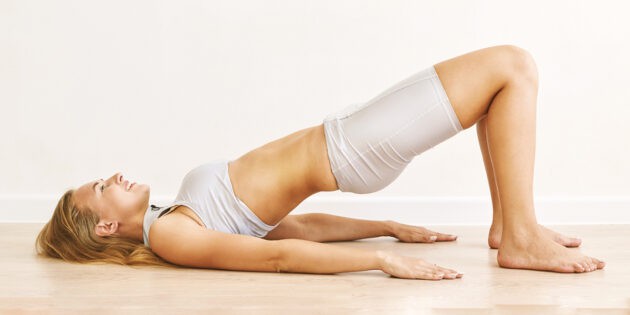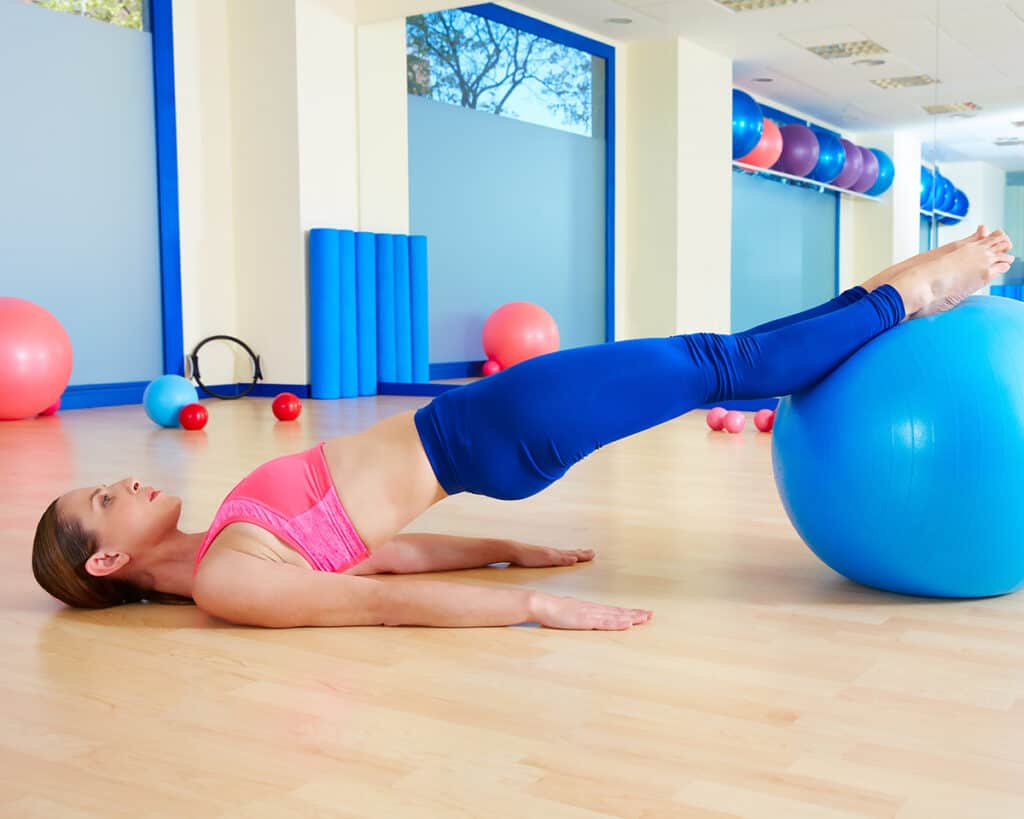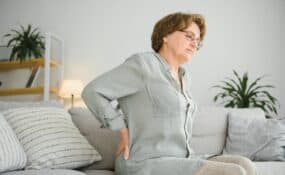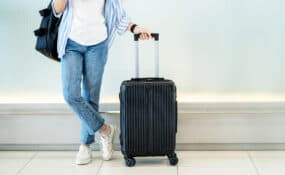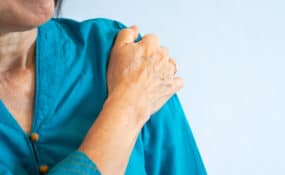Hip dips are a great way to stretch and strengthen your hips and lower back muscles. If you’re looking for some new exercises to challenge your core muscles, then look no further.
In this blog, we discuss the anatomy behind hip dips, bridges, and other pelvic tilt exercises, the benefits of these exercises in strengthening major muscle groups and reducing pain, and how to perform them correctly. So, get ready to learn more about these versatile exercises that can help improve your physical fitness routine, mobility, and pelvic floor and hip health.
But what is a hip dip or, as we prefer to call them, a pelvic dip?
Other blogs by Intecore
How To Treat Carpal Tunnel Syndrome
Posterior Cruciate Ligament (PCL) Reconstruction: How To Recover
What Is A Hip (Pelvic) Dip?
First, they’re not the indentations at the top of the thighs, on the outside edge of the hips that Instagram influencers talk about. No, what we’re talking about here are fantastic exercises for strengthening your glutes and core and improving your spinal alignment and posture.
Hip dips, or hip bridge exercises as they’re sometimes called, involve balancing on your lower back while contracting your glutes and pushing through your feet as you lift your pelvis upwards. These exercises help to activate key muscle groups in the hips, abdominals, glutes, quads, calves, hamstrings, and obliques – as well as strengthen your spinal muscles and improve overall balance. As you perform a hip bridge or dip, whatever you like to call them, your body moves through hip extension, lumbar extension, and posterior pelvic tilt, so this simple simultaneously stretches and increases muscular strength in several areas.
If you’re looking to add a new exercise to your workout routine, the hip bridge and other forms of pelvic tilt exercises might be the perfect addition. These moves target your glutes, as well as your hamstrings and lower back. They’re simple yet effective, require little to no equipment, and you can do them anywhere. However, having good form and technique is crucial to get the most out of these exercises. It also helps you avoid injuries and make sure that you’re targeting the right muscles.
How To Do “Hip Dips”
Ok, here’s how to do one…
First, lay on your back with your knees bent and feet flat on the ground. Lift your hips straight up towards the sky, squeezing your glutes as you rise. Hold a moment at the top, then slowly lower back down, “one vertebra at a time,” to the starting position before repeating for several reps. But maintaining a neutral spine, engaging your core, and keeping your shoulders down is also important.
Remember, quality over quantity is key in form and technique. So, take it slow and focus on perfecting the movement before getting hung up on how many reps you can do. Hip dips (done correctly) help tone and strengthen your lower body, improves core stability, and even alleviates lower back pain.
When you master the classic hip bridge, you can also try single-leg hip bridges to engage each glute individually. Another option is to add resistance by placing a weight on your hips or using a resistance band. But if you want an even greater challenge, try hip dips with a barbell for added weight. These variations challenge your muscles in new ways and add an exciting element to your workout routine.
But if you really want to level up and feel energized and refreshed, you can turn your hip dip routine into a high-intensity workout. It’s a great way to torch calories and build endurance. Begin with a set of hip bridges – lying on your back with your feet flat on the ground and lifting your hips towards the ceiling. Follow up with a set of mountain climbers, burpees, and squat jumps for a full-body burn. Repeat for several sets, resting for short periods in between.
Adding hip dip (bridge) exercises to your workout routine offers a long list of benefits for your overall fitness. Not only do these exercises work to strengthen and condition your glutes, but they can also target your lower back and core muscles. They can also improve your posture and help alleviate lower back and hip discomfort, promoting better balance and greater stability.
What Are The Benefits Of Pelvic Tilt Exercises?
So, one of the things that “hip dip” exercises do is move your body through a posterior pelvic tilt. But what are the benefits of pelvic tilt exercises?
If you want to improve your posture, prevent back pain, and strengthen your core muscles, all forms of pelvic tilt exercises are great. Pelvic tilts are simple but highly effective exercises that can help you achieve a strong – and healthy – posture. They’re a valuable addition to your fitness routine – focusing on strengthening the lower back, pelvic area, and hip muscles. These muscles are important in your posture, alignment, pelvic floor health, and overall mobility. However, understanding the basics of pelvic tilt exercises and how to perform them correctly is crucial if you want to reap the many benefits.
There are two types of pelvic tilts, the anterior (forward) and posterior (backward), which involve tilting the pelvis forward or backward. The “hip dip” exercises we mentioned involve a posterior pelvic tilt – where you move the pelvis backward. When done correctly, pelvic tilt exercises improve your core stability, alleviate lower back pain, and can even enhance your sexual function (male and female). Yes, really. A healthy pelvic floor is essential for a healthy sex life.
But aside from sexual function, maintaining good posture is essential for your general health and well-being – and the key to proper posture lies in your pelvis. The pelvis is the foundation of your body, and when it’s out of alignment, it can cause a chain reaction, leading to bad posture and chronic pain. But simple pelvic tilt exercises like hip dips can help improve your posture and prevent these problems.
One of the other keys to maintaining good physical health is having a strong core. When it comes to strengthening the core, pelvic tilt exercises also effectively target those muscles. So, how do you do them?
Pelvic tilts have a similar effect to hip dips, since they involve contracting and releasing the muscles in the pelvic area. These exercises are particularly beneficial if you sit for long periods or have poor posture. Also, as we age, our bodies become less flexible, making it harder to perform daily tasks and even simple movements like bending down to pick something up. The good news is there are simple exercises you can do to increase your flexibility, particularly in the pelvic area.
Pelvic tilt exercises involve gently moving your pelvis forwards and backward in a controlled motion, which helps improve your range of motion and loosen tight muscles and connective tissue.
With just a few minutes of hip dips and pelvic exercises a day, you can increase your flexibility and feel better in all areas of your body. They may not seem like the most glamorous workout routine, but they offer many benefits. Regularly practicing these exercises helps reduce pain and discomfort in the lumbar spine and pelvic regions, strengthen your core, and prevent injuries by strengthening the muscles around the pelvis and lower back. Plus, they promote better circulation, which aids in healthy digestion and elimination.
Many common exercises like hip dips, thrusts, and bridge poses in yoga involve pelvic tilting. Still, the easiest way to incorporate pelvic tilt exercises into your daily routine is to lie on your back and gently move your pelvis backward and forward. It’s a bit harder than it sounds to focus on your pelvis and get it to do what you want – especially if you have tension and tightness in your hip (flexor) muscles. But if you have anything more than mild discomfort in this area or you’re struggling with hip pain that impacts your daily life, we recommend you come and see us for an evaluation to see what’s going on.
Physical Therapy For Hip Pain
Hip pain can significantly impact your ability to move comfortably and live an active lifestyle. But it’s important to find out what’s causing it rather than ignore it and hope it’ll go away. Many factors, including injury, arthritis, and genetics, can cause hip pain. However, physical therapy can be an effective treatment option for reducing pain and improving mobility – including hip dips to strengthen and stretch the hip muscles, manual therapy to improve joint mobility, and other therapies to reduce pressure on the joints during movement.
Physical therapy can relieve the persistent aches and pains of hip pain that can put you out of action. We help to strengthen areas around your hips to reduce or even alleviate discomfort, so whether you want to recover from an injury, improve mobility, avoid hip replacement surgery, or boost your confidence by moving better without hip pain, hip dips can be a great way to help preventing all of that. If not, then contact us to see a physical therapist..
- 5 Ways to Treat Chronic Back Pain Without Surgery - July 21, 2024
- 10 Back-Saving Tips for Gardening This Summer - July 14, 2024
- 5 Sciatica-Friendly Travel Tips for Your Summer Vacation - July 7, 2024

